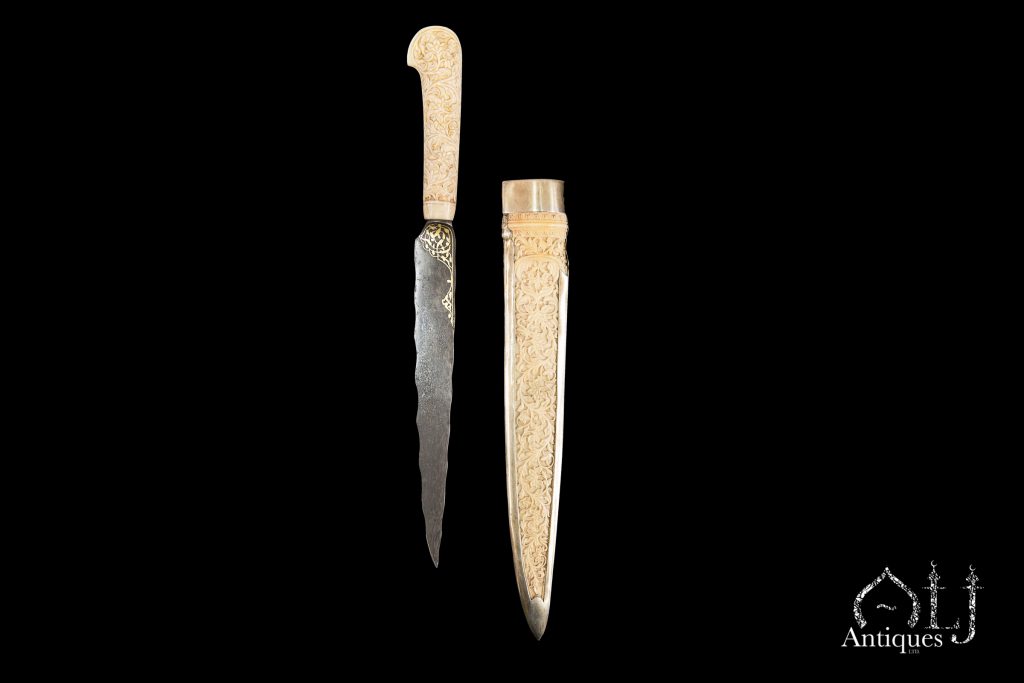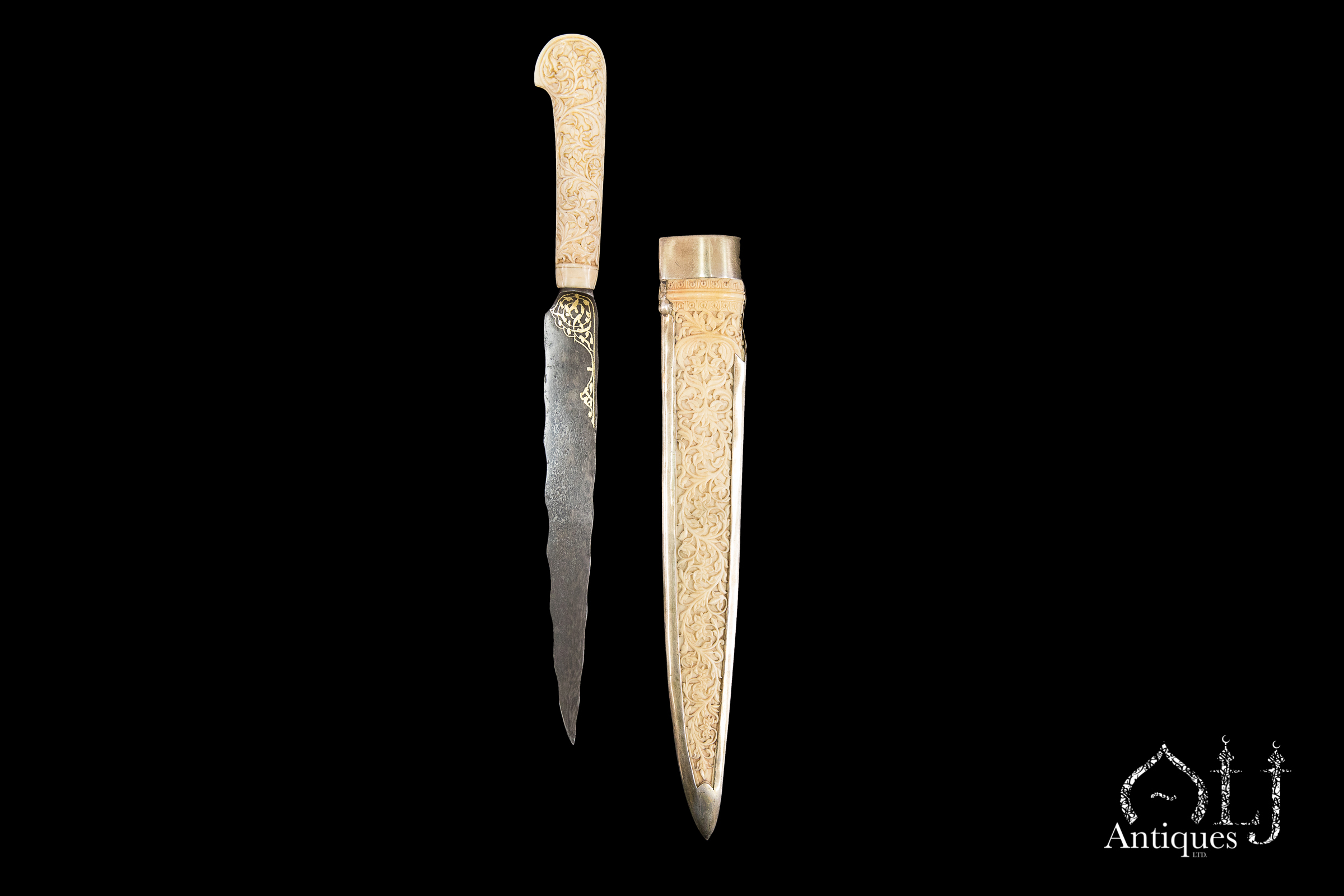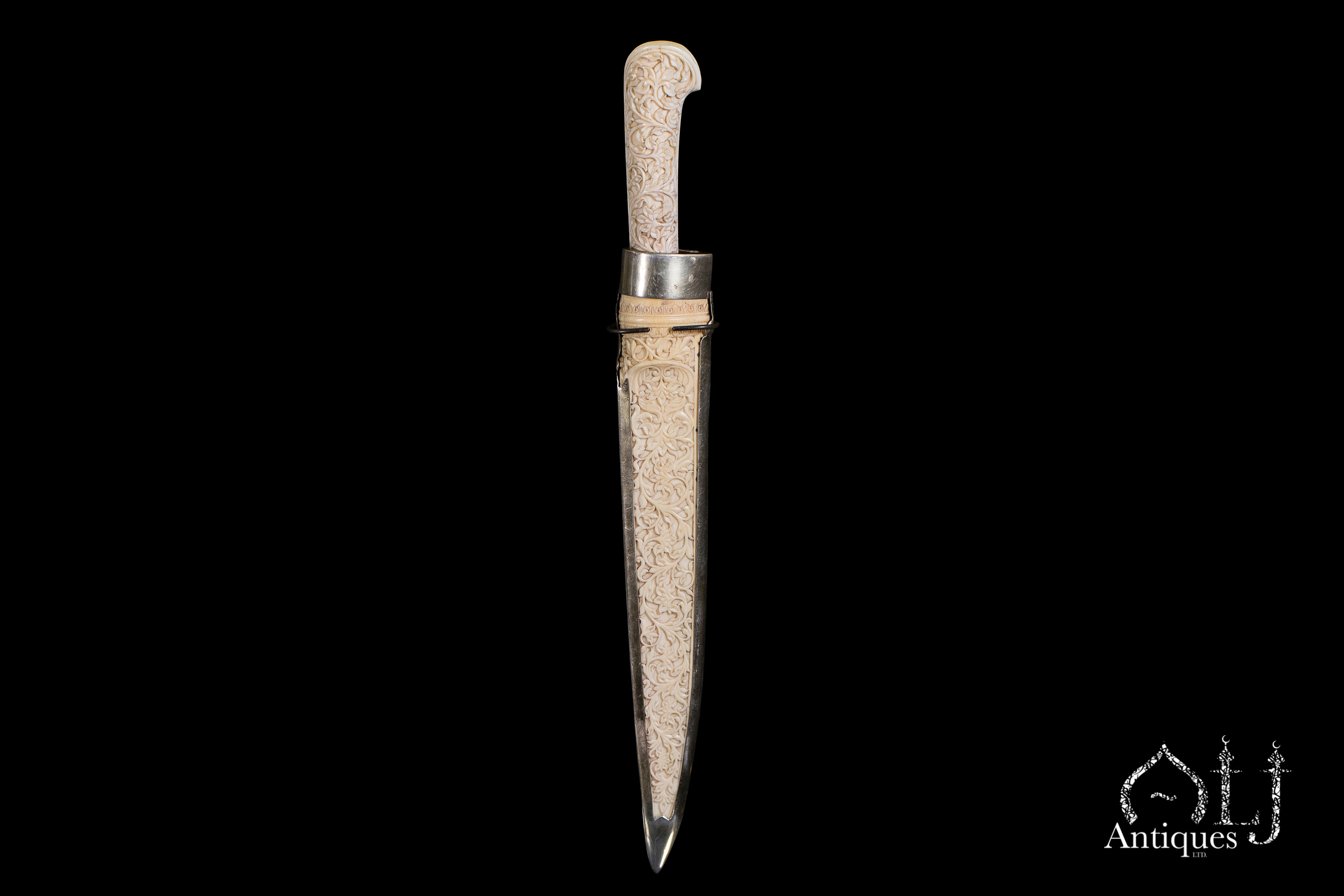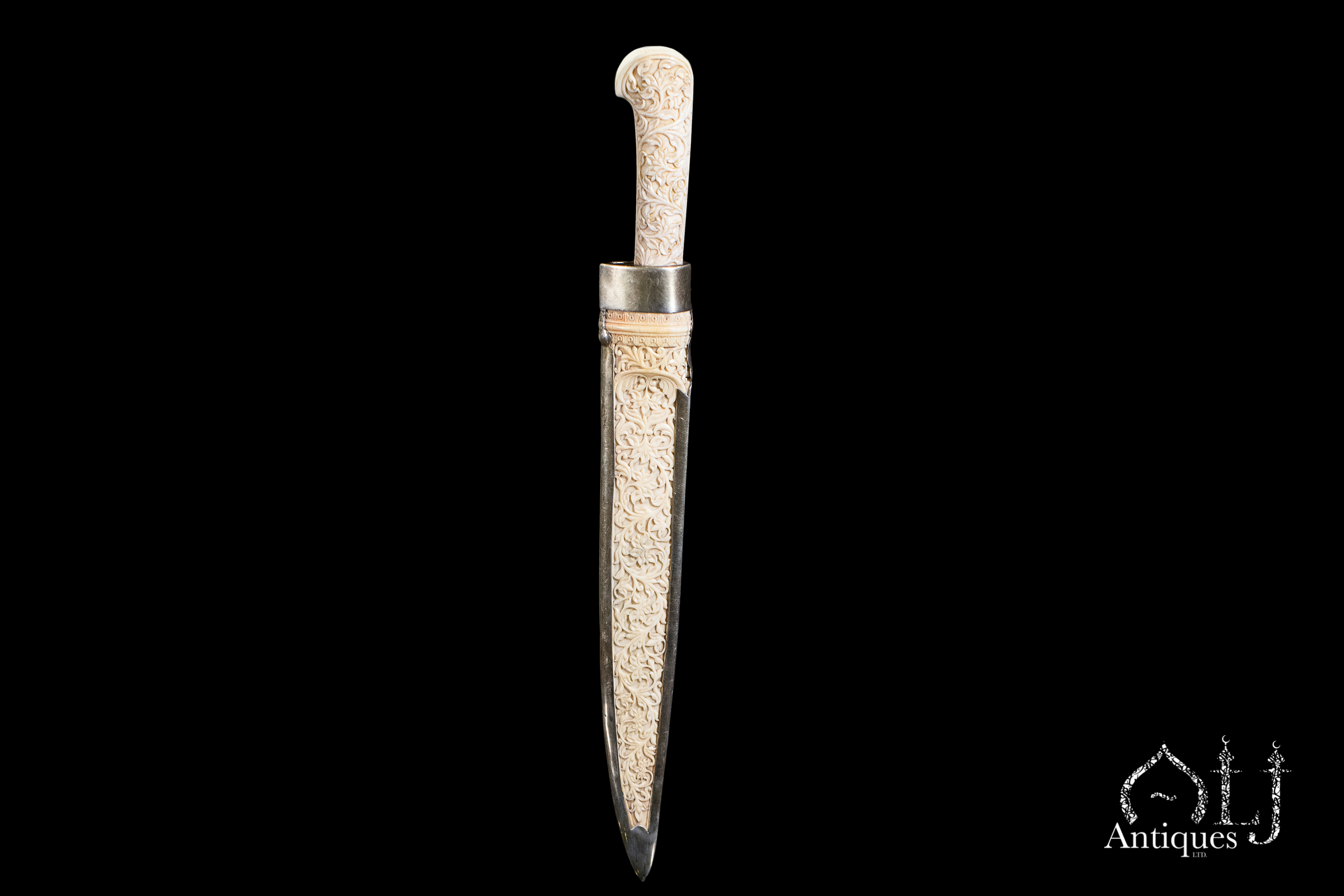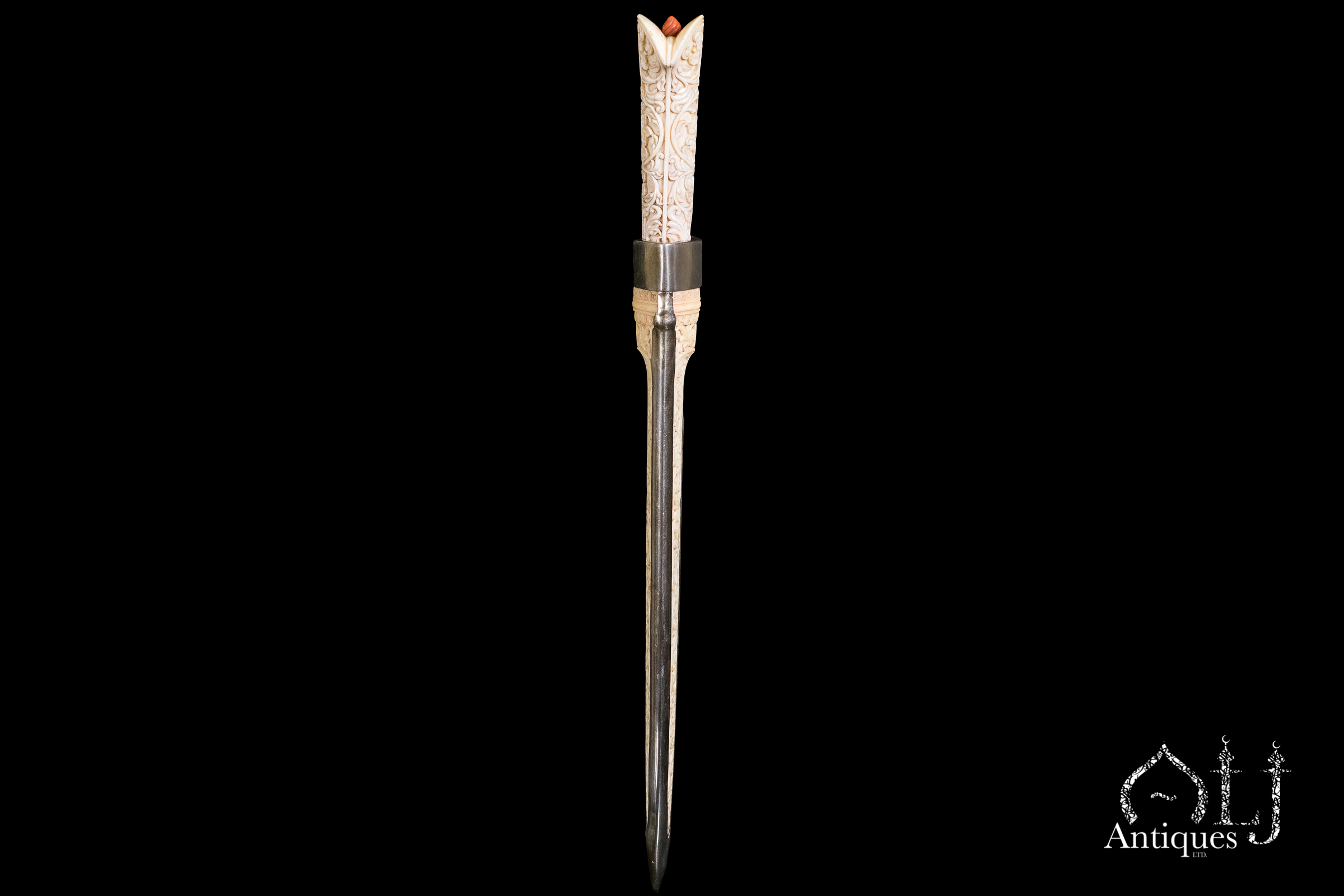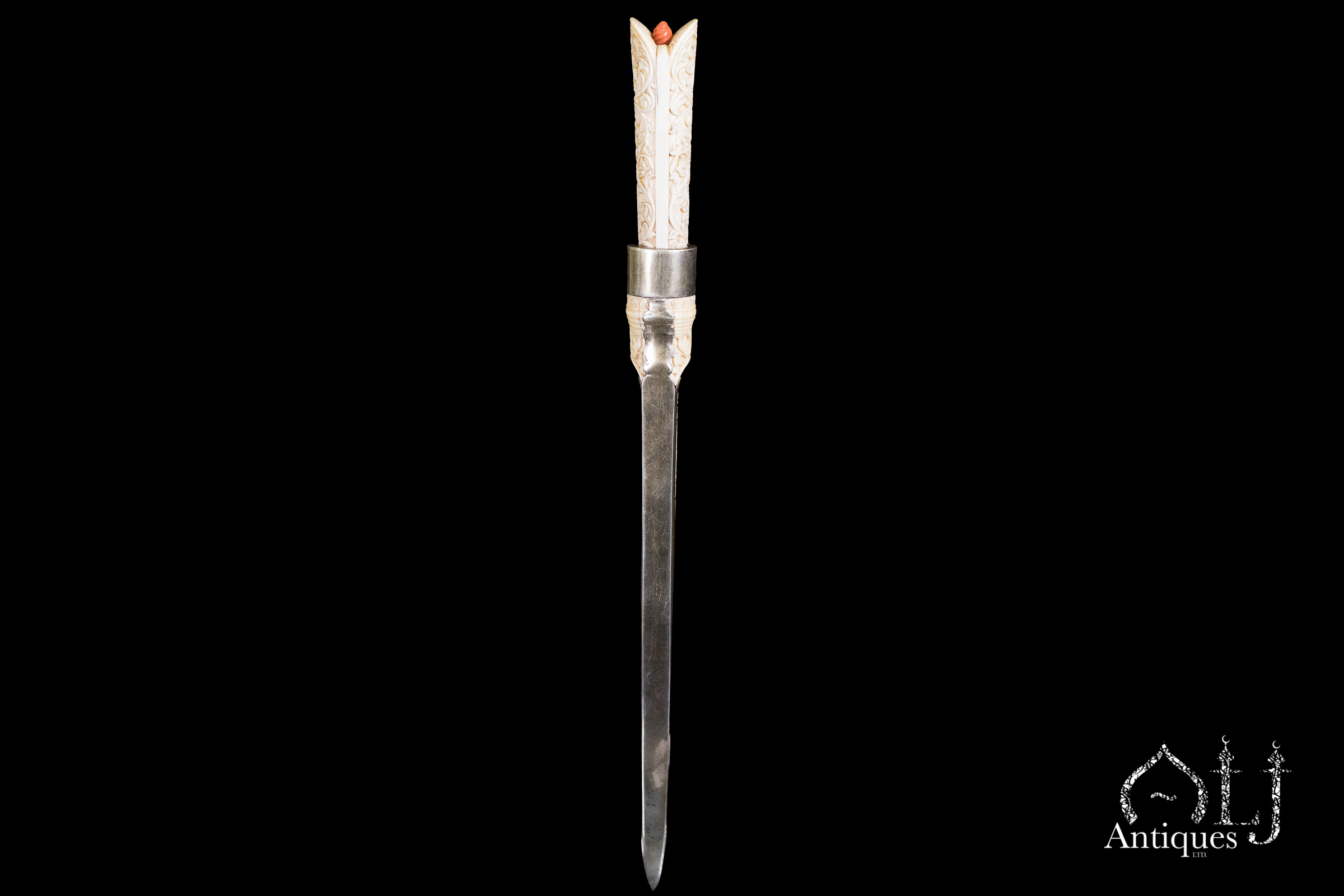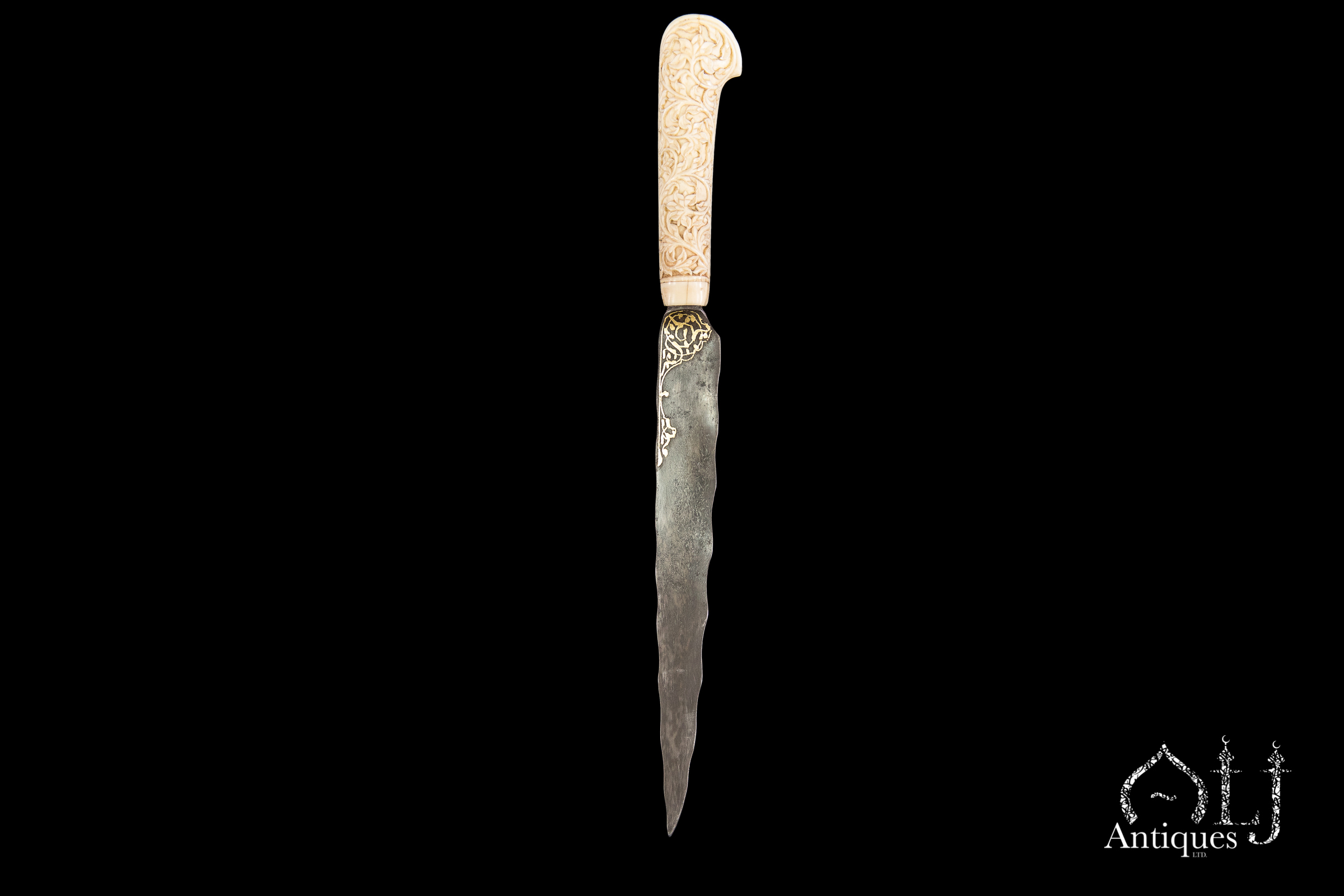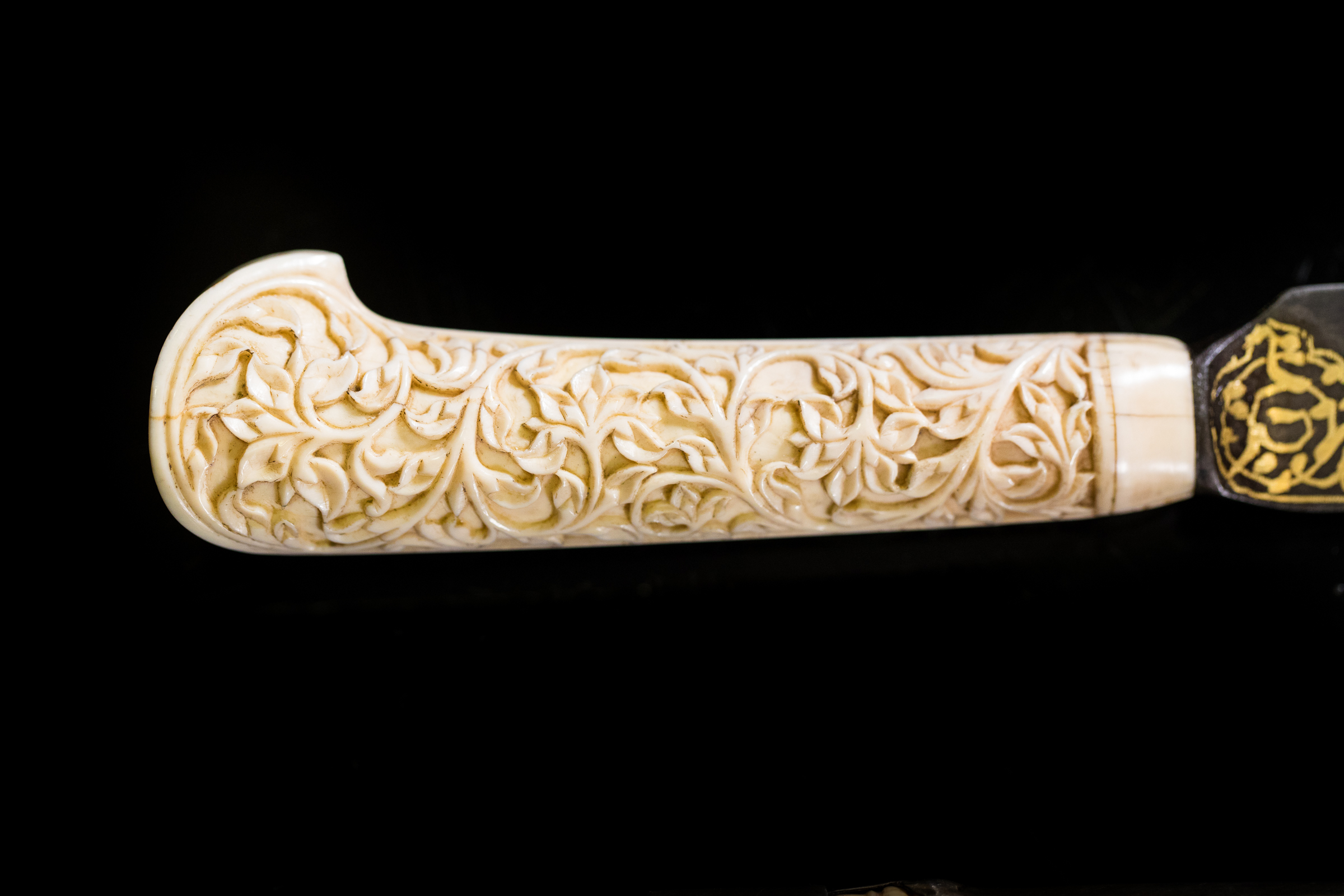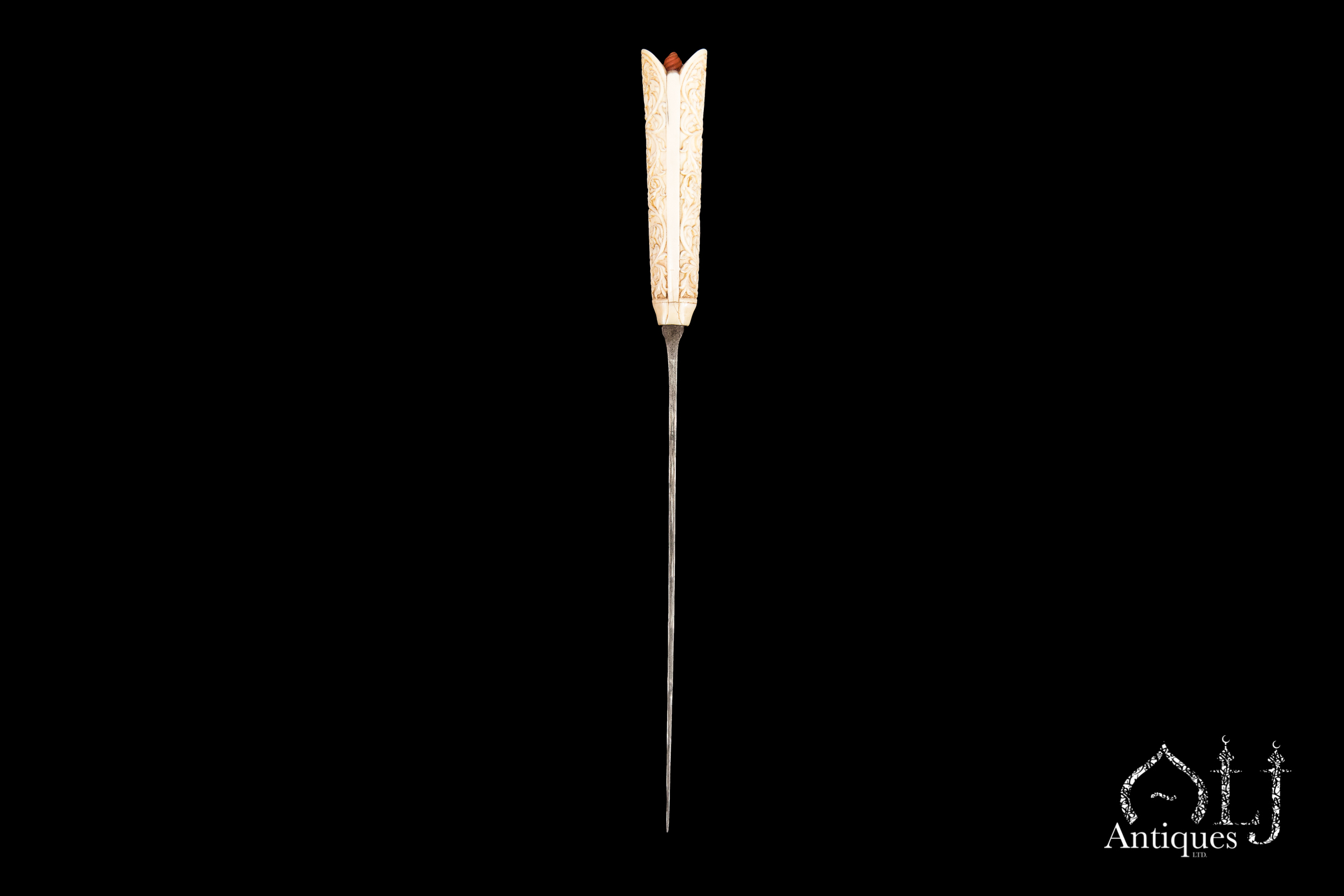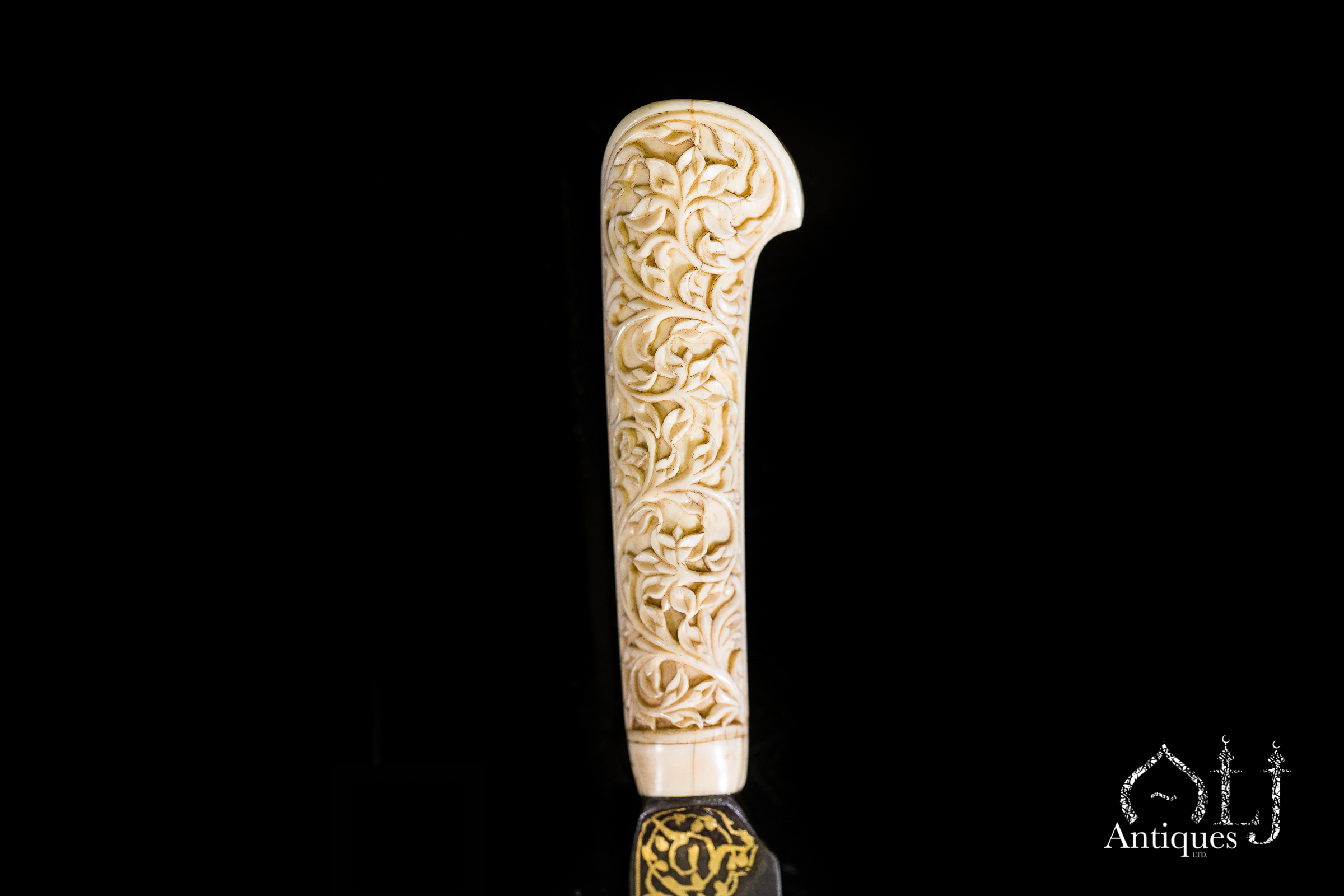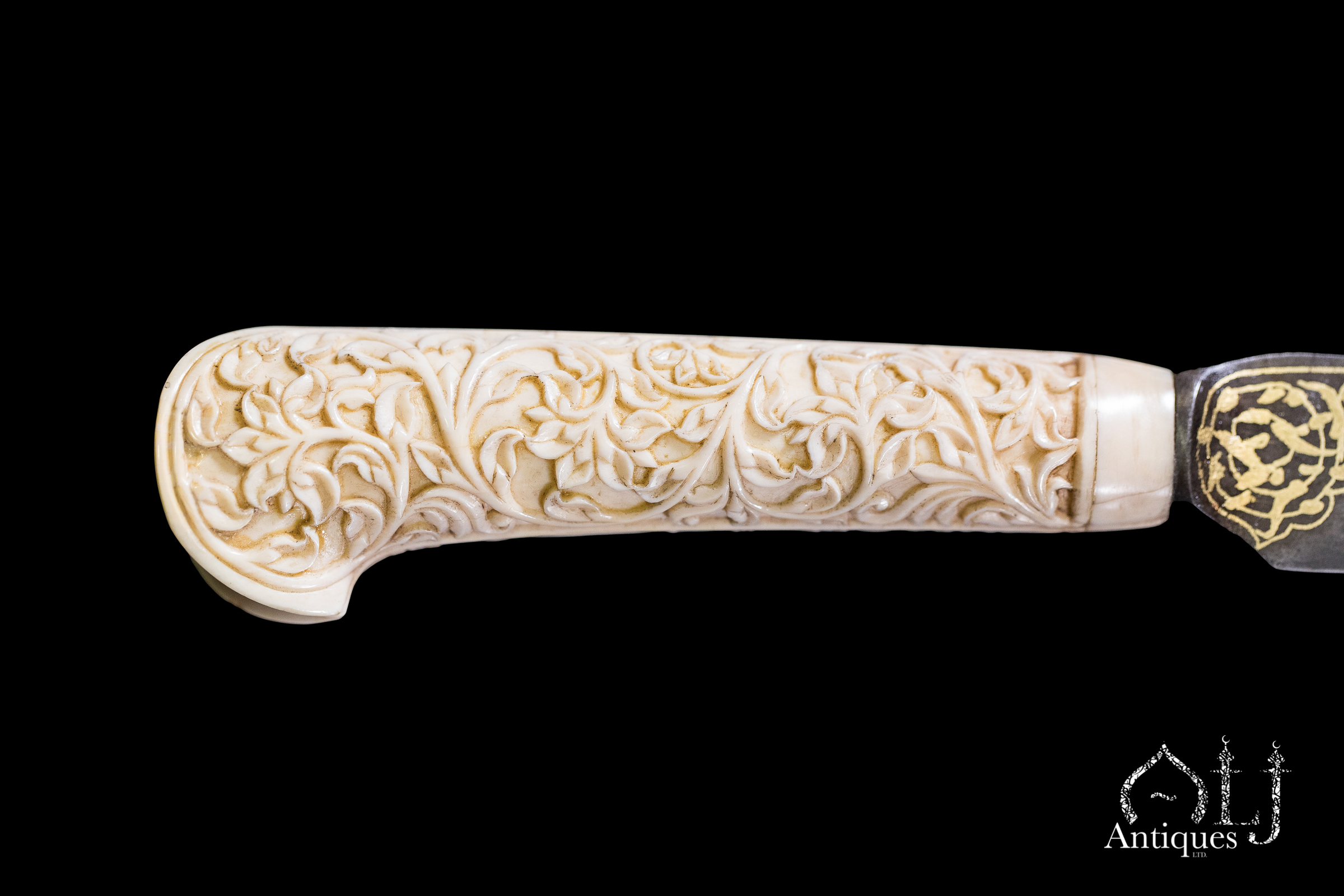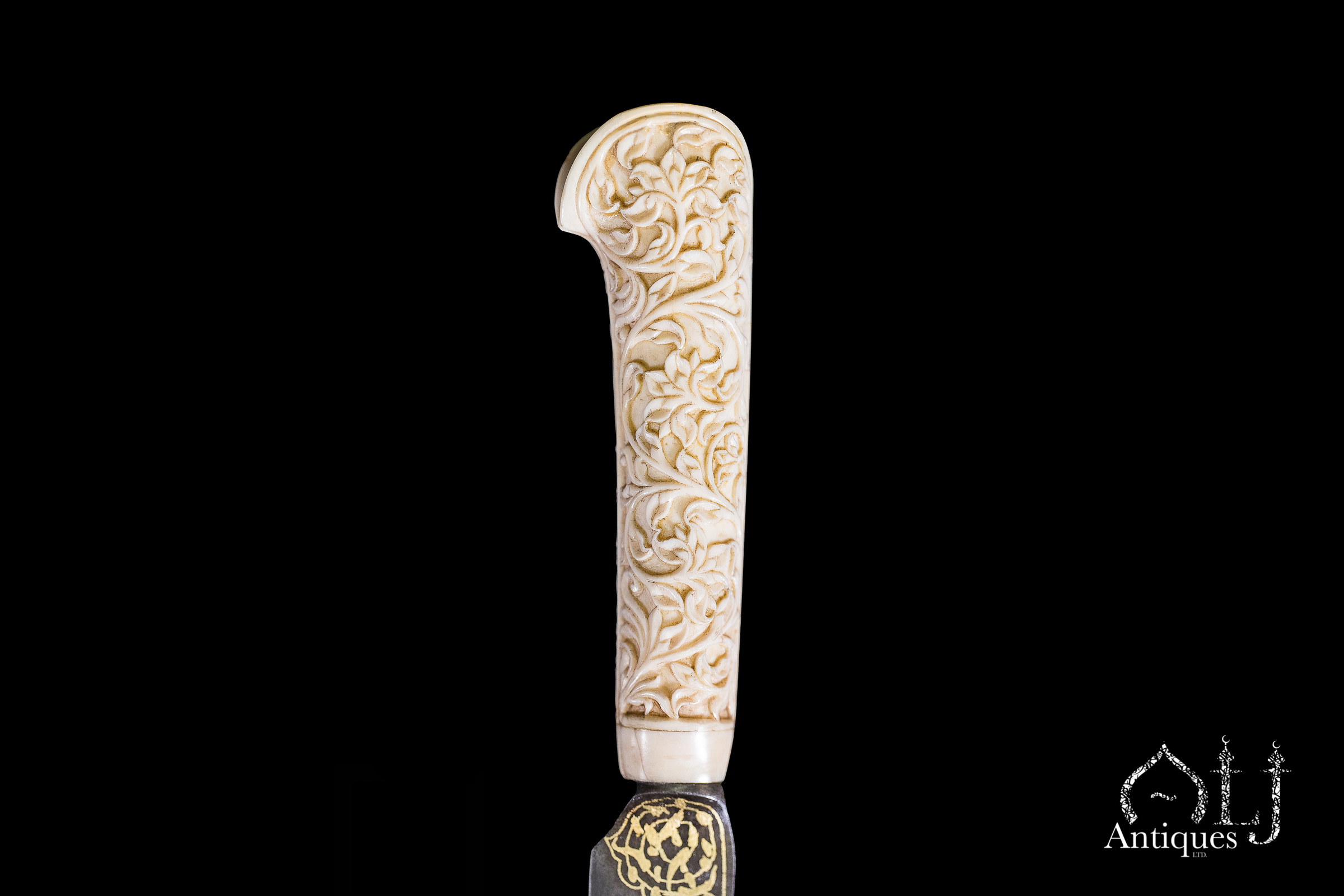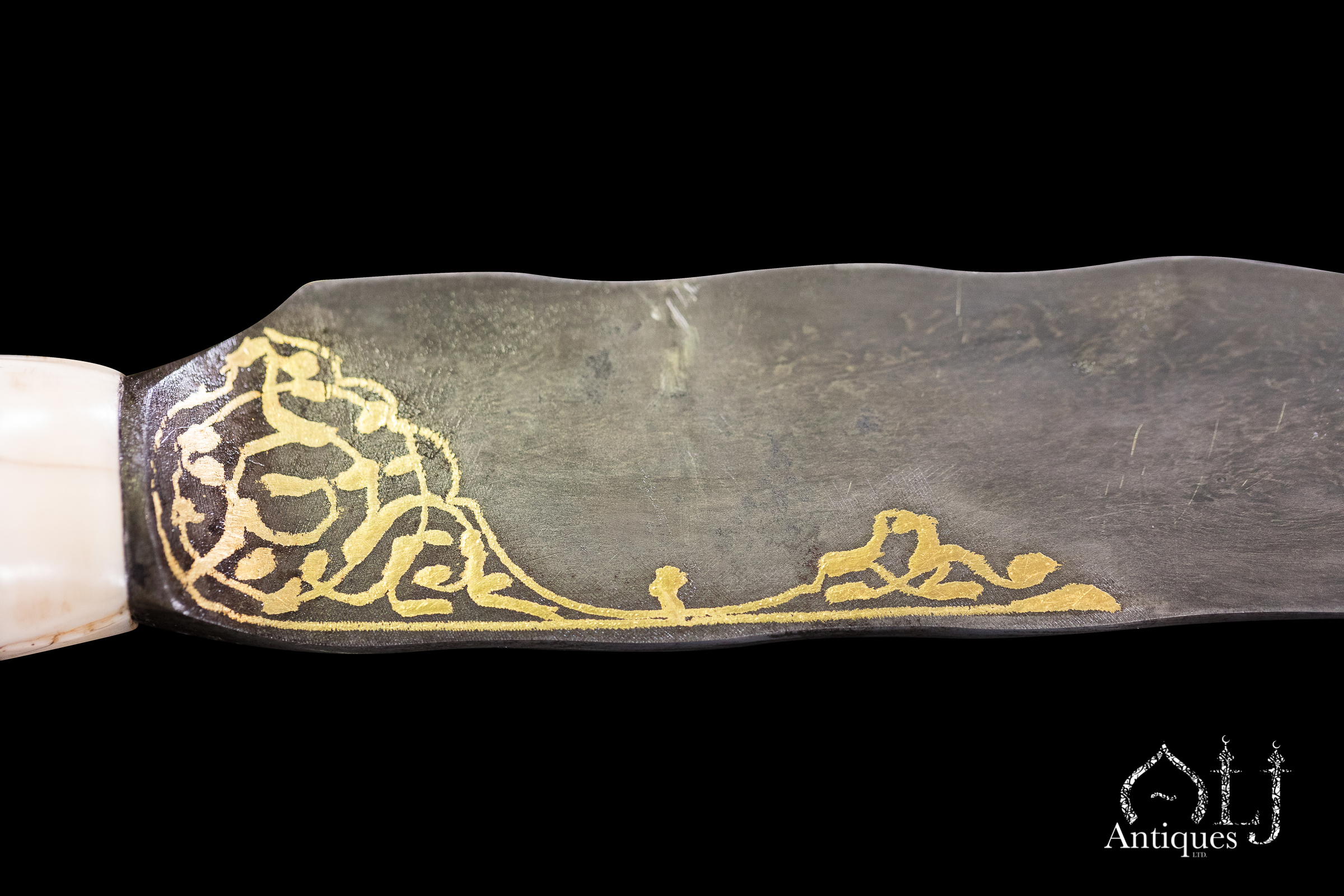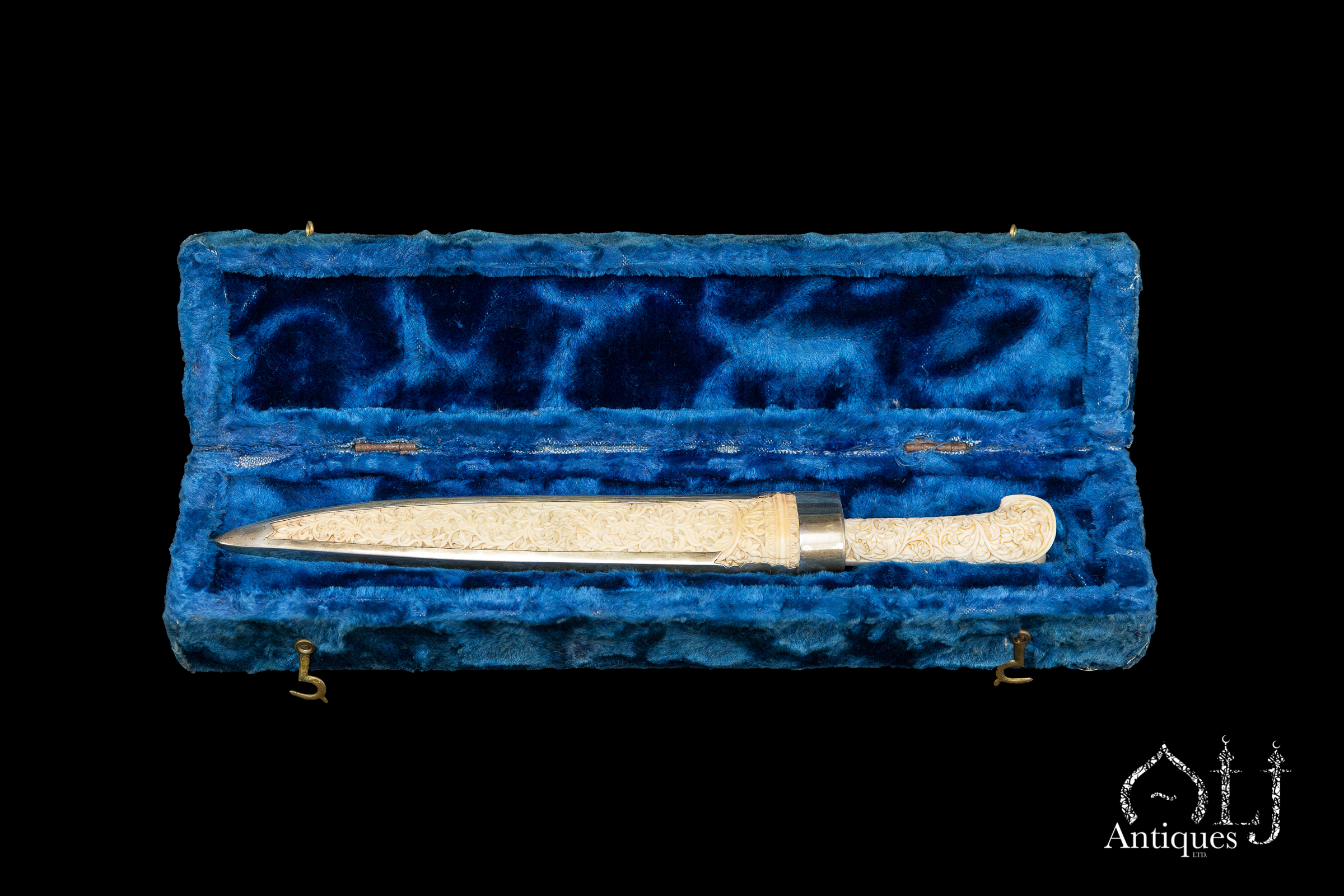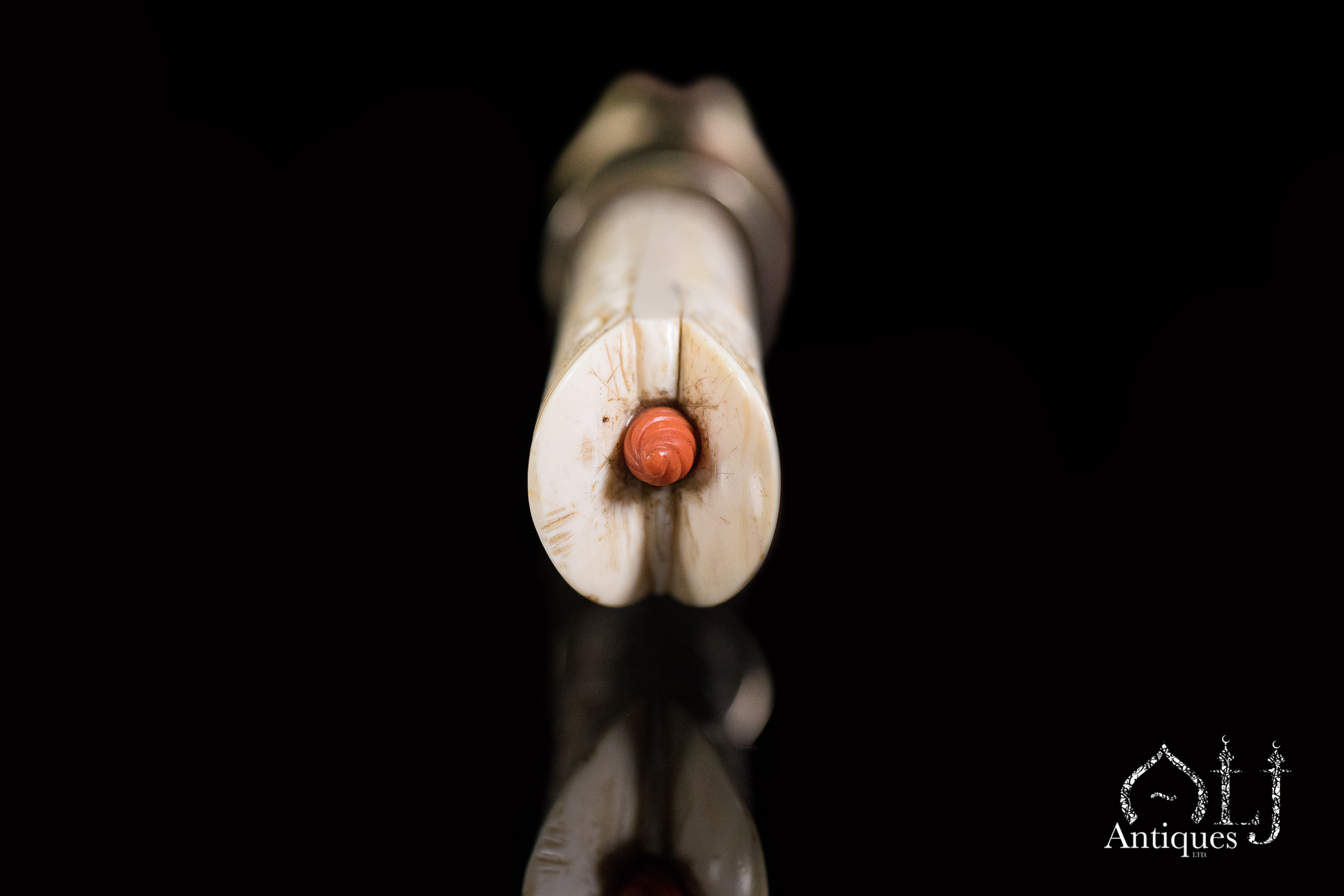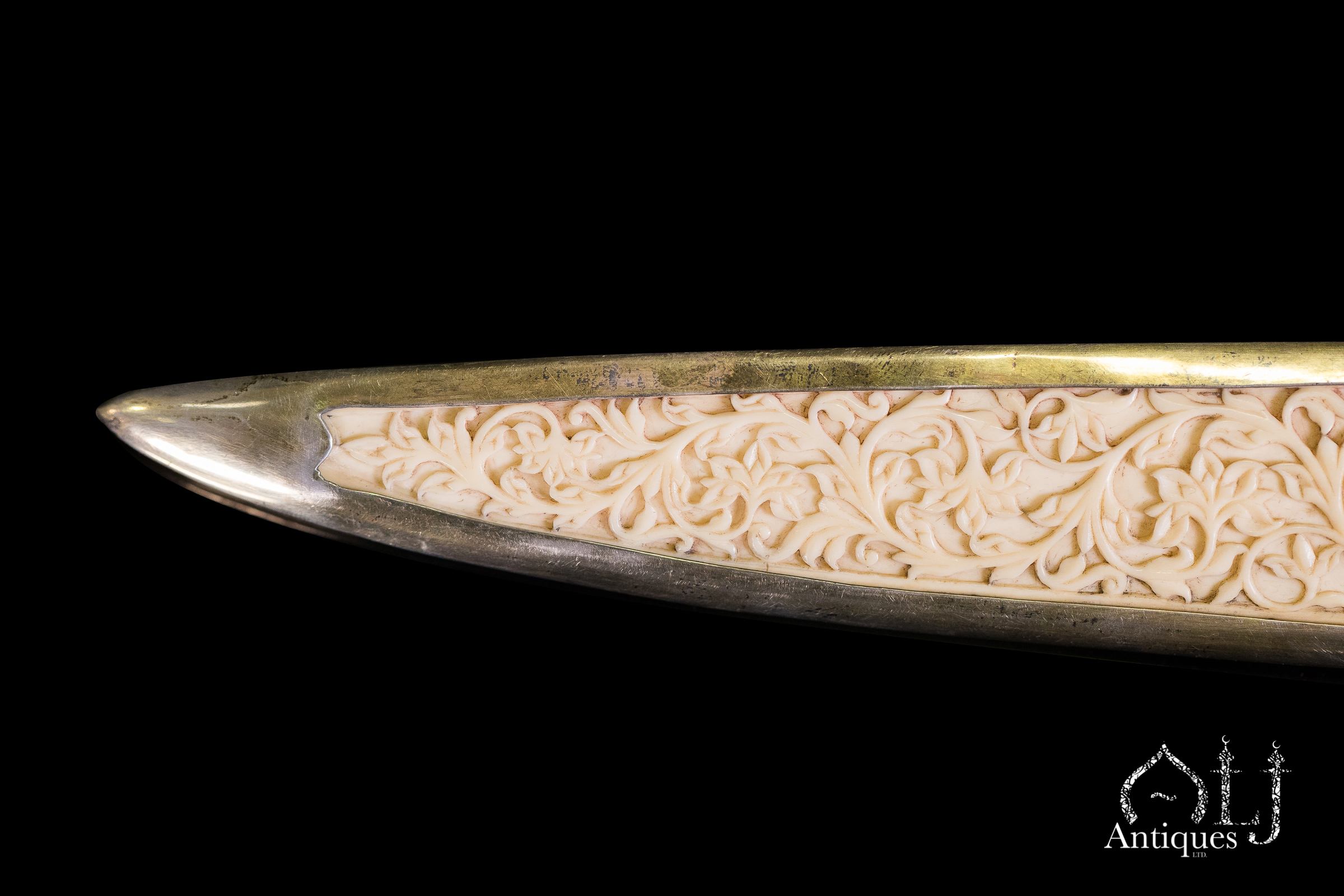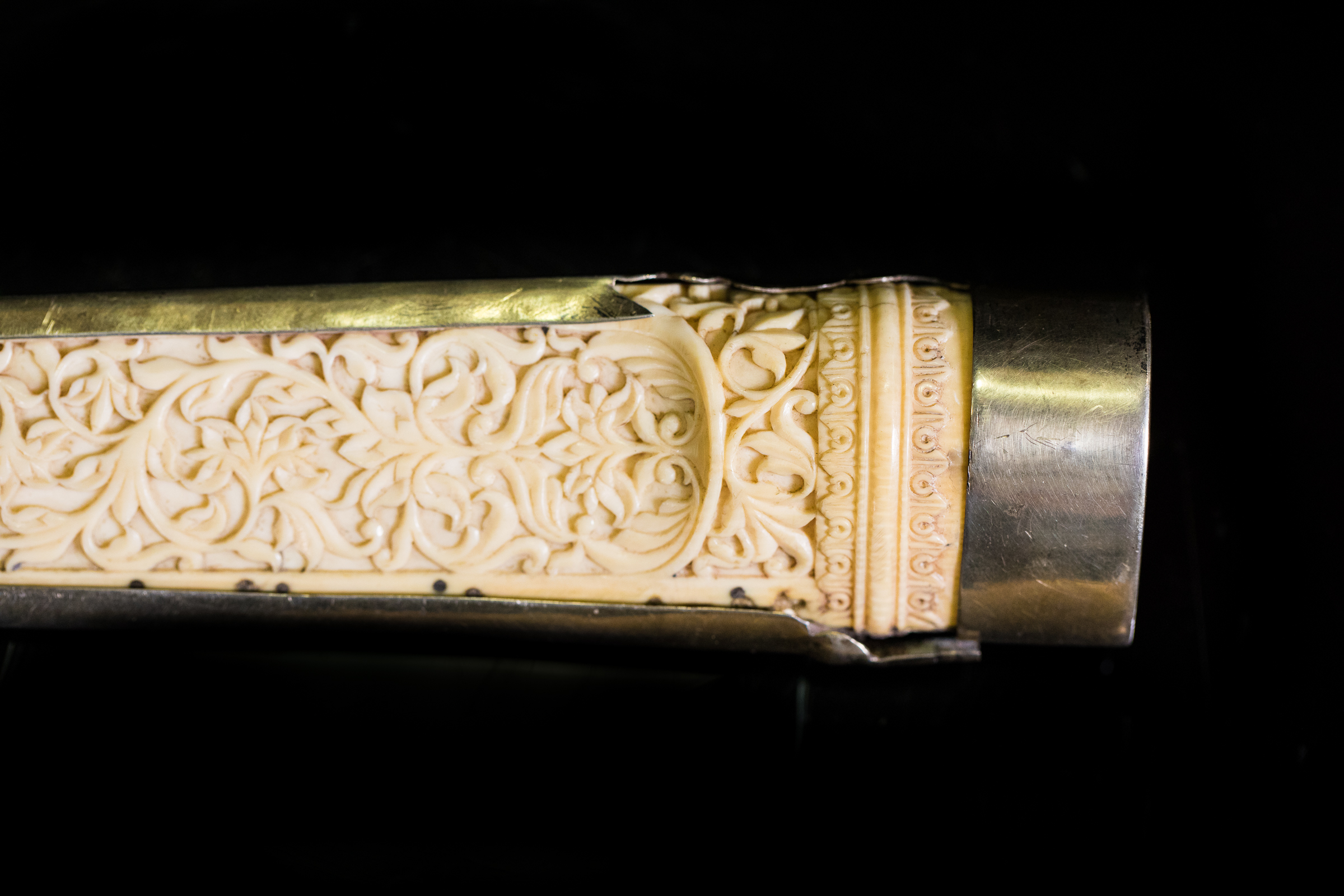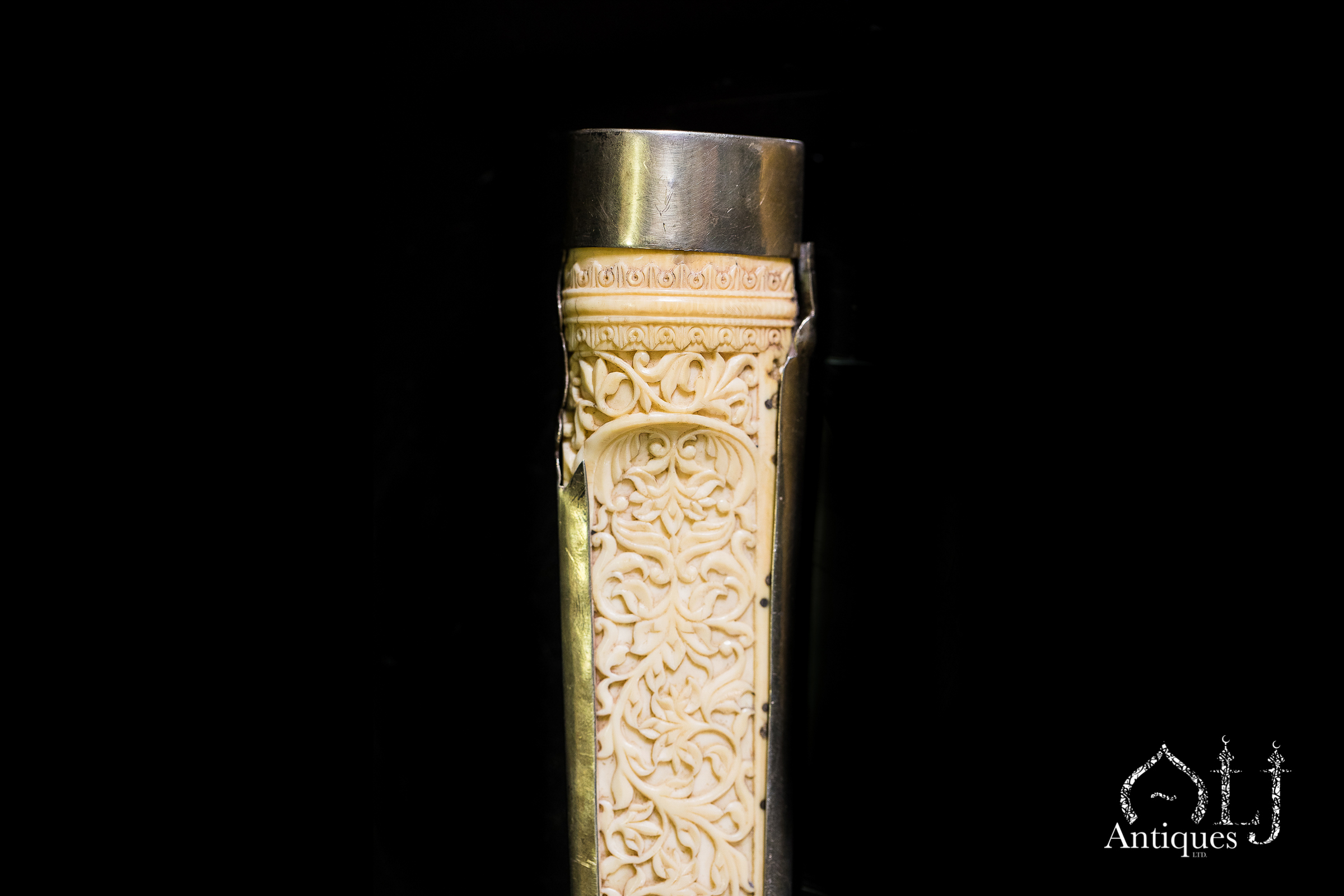Description
The V shaped pommel end may suggest that this dagger of an Ottoman origin or more precisely from the Balkan region because the hilt resembles the Balkan Yatagans, but we think that this magnificent dagger was probably commissioned at the Mughal or Deccani courts of India.The Stylized Wootz Steel Blade Is Decorated With Gold Inlay.
This item was sold before the Ivory ban became force in the UK, on the 6th. of June, 2022.
Dimensions
36 cm long (together blade and scabbard).
4 cm the width at largest point.
Condition
Condition: Very Good (some wear and tear to gilt-silver mounts, the carved coral at the handle of a later replacement).
References
For A very similar 17th. century Mughal Ivory Dagger or Kard, please see Splendors of the oriental Arms Exhibition Catalogue, from the 4th. of May – 31 July 1988, Paris-France, by Philippe Missillier & Howard Ricketts, ISBN: 2 95 02 785-0-7, ACTE-EXPO.
Please see Lot No. 218 catalogued in page No. 130.
For similar shaped daggers that were produced at the Mughal and Deccani Courts of India but made with different materials please see
1-Precious Indian weapons and other princely accouterments, by Dar Al-Athar Al –Ialamiyyah, The Sabah Collection, Kuwait, By Salam Kaoukji, 2017, ISBN 978-0-500-97080-5, Thames & Hudsaon
Please see Cats.44, 41, 42, pages 140-141, 130-133, 134-137,142-145. Also please notice the similarities with the 17 c. Deccani under rock-crystal painted decoration pish-kabz hilt cat. 266 illustrated in pages 266-267 & 272-273. Also the Deccani carved Ivory arms cats. 101& 102 pages 278-283.
2- Treasures of the Mughals and the Maharajas, The Al Thani Collection, Skira, Venice, Palazzo Ducale, 2017, lot 127 illustrated on page 127.
3-Islamic Arms and Armor In The Metropoliten Museum Of Art, By David G. Alexander, with contribution by Stuart W. Pyhrr and Will Kwiatkowski, distributed by Yale University Press, New Haven and London, 2015, ISBN 978-1-58839-570-2, please see the 17th century magnificent dagger with scabbard decorated with gold and incrusted with rubies and emeralds, lot No. 80 exhibited on page 206 & 209.
Other related Examples from other Muslim dynasties and cultures.
4-For a similar style of Ottoman ivory carvings please see Splendors of the Ottoman Sultans, by Dr Nurhan Atasoy and Dr Tulay Artan, presented by wonders, Turkey, 1992, Please see the magnificent 16th carved ivory mirror exhibited in page 198.
5-For a similar engraving but in silver please see the Repousse decorations on the sheath of the Bukhara dagger, lot is published in
Uzbekistan, Heirs of the Silk Road, Edited by Johnnes Kalter and Margareta Pavaoli, Thames and Hudson, 1977, ISBN 0-500-97451-9, Lot No.339-340 illustrated on page 183.
6-For another Central Asian object that shares the same style of decorations but with different materials, please see the magnificent Bukhara Gold hat published in
Beyond the Palace Walls, Islamic Art From The State Hermitage Museum, Islamic Art in a World Context, edited by Mikhail B. Piotrovsky and Anton D. Pritula, The National Museums Of Scotland, 2006, ISBN 978 1 905267 04 0, lot No. 222 exhibited on page 219.
7-For another central Asian example that shares some resemblance to our lot please sees the carved ivory handle of the Caucasian sabre (Shashka), lot is published in
Searching for lost Relics by Isa Askhabove, Khamzat Askhabov, Cultural Heritage, 2016, ISBN 978-5-4444-5509-8, lot exhibited on Page 204.
8-For another Central Asian example please see Arms and armor of the Caucasus, by Kirill Rivkin, ISBN 978-0-692-49481-3 Printed in the USA, 2015, please see figures 117 (the construction of the Cossack or shashka hilt) exhibited on page 212 also see figure 123 exhibited on page 220 also see figure 212 the Shashka knife exhibited on page 300.
9-For another similar Caucasian stylized single edged blade dagger please see
Searching for lost Relics by Isa Askhabove, Khamzat Askhabov, Cultural Heritage, 2016, ISBN 978-5-4444-5509-8, Please see the Caucasian Kindjel exhibited on Pages 279.

